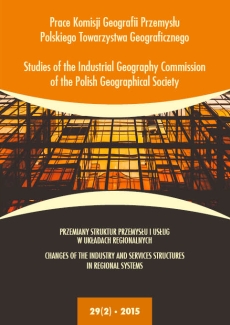The Functioning of Special Economic Zones in Russian Federation
DOI:
https://doi.org/10.24917/20801653.292.5Keywords:
economic development, investments, Russian Federation, special economic zoneAbstract
The aim of this article is to introduce the functioning of special economic zones in the Russian Federation. The subject of study are special economic zones. The main task was to submit the aims of establishment of the zones, legal, social and economic conditions of development. Types of the zones in Russia were described in a detailed way. These are: innovative technology, industrial production, tourism and recreational and port type of zones. They were characterized in terms of the area, capital expenditures, the number of residents and the number of employees. The conclusions are based on the analysis of statistical data from websites of the Ministry of Economic Development of Russia and report on the assessment the functioning of the zones. The purposes of establishment of special economic zones include an increase in export, growth of technology and economic activation of the region. For Russia, a very important aim is to increase the employment and training of highly qualified workers. In Russia activity is conducted by 343 companies, which in 2013 invested 100 898 million rubles (1 654.7 million euro). The zones in Russia have been created in 2005. The preferential condition for residents in Russia is the possibility of using tariff concessions. In Russia, the amount of taxes depends on the type of zone. For industrial zones and port taxes it amounts 2%, while for the technical - 0% for a period of five years and tourist-recreational - 0% for 10 years.
Downloads
Metrics
References
Ahmetshina, L. (2011) (2014, 11 września). Czynniki i tendencje powoływania specjalnych stref ekonomicznych w regionie. Pozyskano z http://www.creativeconomy.ru/articles/13250/.
Federalna Służba Celna Federacji Rosyjskiej (2015, 6 stycznia). Pozyskano z http://www.customs.ru/. Furszik, M., Szutowa, A. (2014, 9 września). Specjalne strefy ekonomiczne: doświadczenie i perspektywy. Pozyskano z http://media.rspp.ru/document/1/c/8/c8bc836c9fee82d7c4450d4b85dc7c22.pdf.
Gromowa, A.C., Kuskowa, C.B. (2013) (2014, 1 października). Raport – ocena efektywności funkcjonowania specjalnych stref ekonomicznych w Federacji Rosyjskiej. Pozyskano z http://sjs.tpu.ru/ journal/article/view/756/551.
Ministerstwo Rozwoju Gospodarczego Federacji Rosyjskiej (2015, 4 stycznia). Pozyskano z http:// www.economy.gov.ru/.
Przegląd zmian w ustawie o specjalnych strefach ekonomicznych w Federacji Rosyjskiej z 3 czerwca 2005 r. (2014, 5 października). Pozyskano z http://www.consultant.ru/document/cons_doc_ LAW_79514/#p8.
Raport o rezultatach funkcjonowania specjalnych stref ekonomicznych za 2011 r. (2014, 10 października). Pozyskano z http://economy.gov.ru/minec/activity/sections/sez/doc20120928_04.
Raport o rezultatach funkcjonowania specjalnych stref ekonomicznych za 2012 r. (2014, 11 września) Pozyskano z http://economy.gov.ru/minec/about/structure/deposobeczone/doc20130930_7.
Raport o rezultatach funkcjonowania specjalnych stref ekonomicznych za 2013 r. (2014, 11 września). Pozyskano z http://economy.gov.ru/minec/activity/sections/sez/becomeinvestor/news/201409301. Rosja.
Specjalne strefy ekonomiczne. (2014, 1 października). Pozyskano z http://www.russez.ru/oez/ Ustawa federalna z 22 lipca 2005 r. o specjalnych strefach ekonomicznych w Federacji Rosyjskiej. Pozyskano z http://base.garant.ru/12141177/ (ze zmianami).
Zygmunt, A. (2013). Specjalne strefy ekonomiczne w Rosji. (2014, 20 października). Pozyskano z http://moskwa.trade.gov.pl/pl/PrzewodnikporynkuFR/article/detail,1069,Specjalne_strefy_ekonomiczne_w_Rosji.html.
Downloads
Published
How to Cite
Issue
Section
License
Articles are published under the terms of the Creative Commons License (CC BY-ND 4.0; Attribution– NoDerivs).

